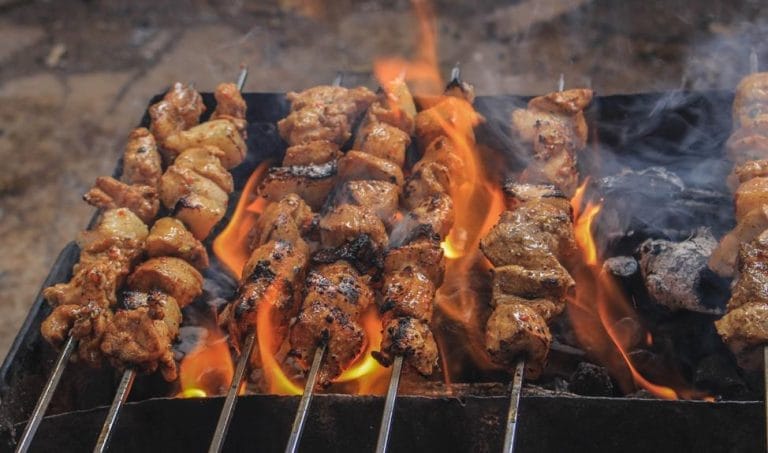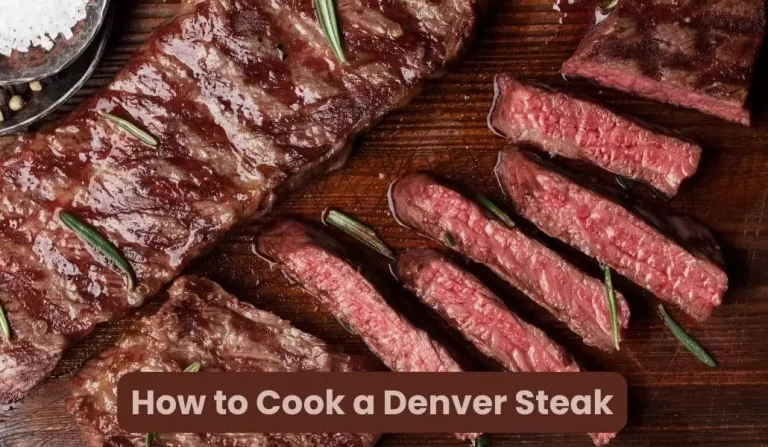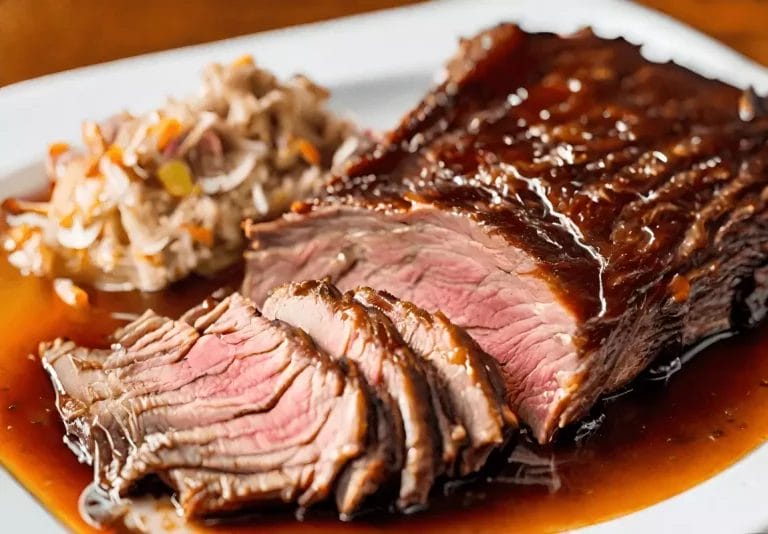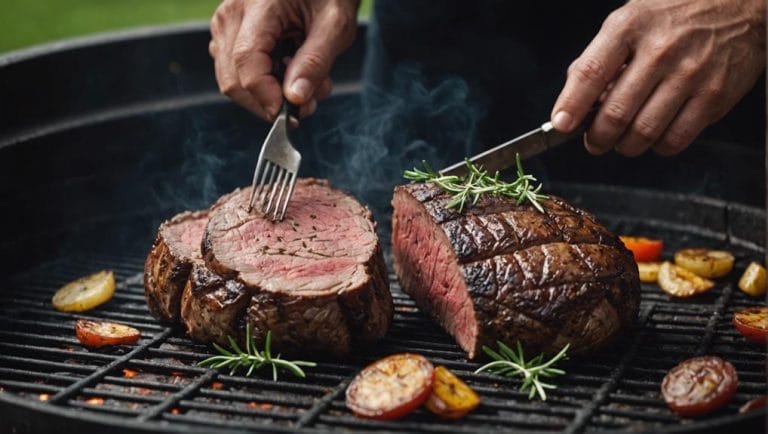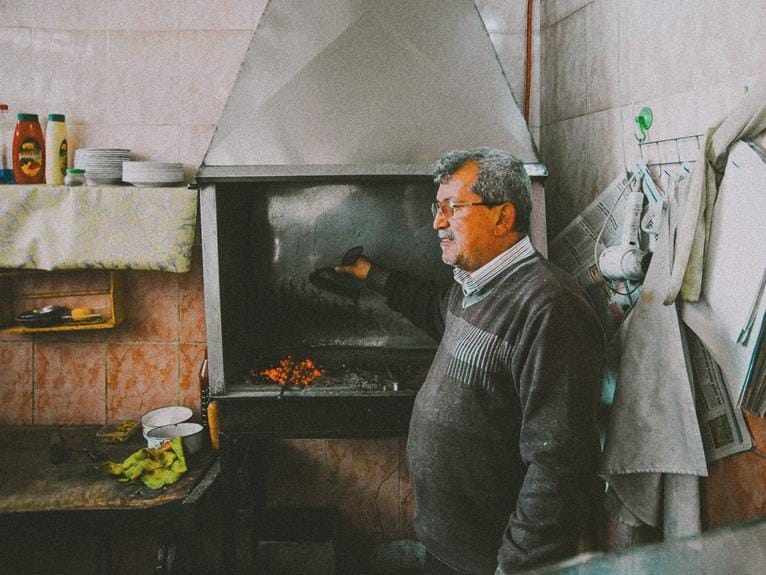The Perfect Brisket: How Long to Let it Rest for Mouthwatering Results

So, you’ve just finished cooking a mouthwatering brisket, and now you’re wondering how long to let it rest. Well, my friend, you’ve come to the right place.
In this article, we’ll explore the ins and outs of brisket resting, from understanding what a brisket is to the different methods of resting. Get ready to dive into the world of juicy, tender brisket and discover the perfect resting time for your masterpiece of meat.
Let’s get started, shall we?
Key Takeaways
What is a brisket?
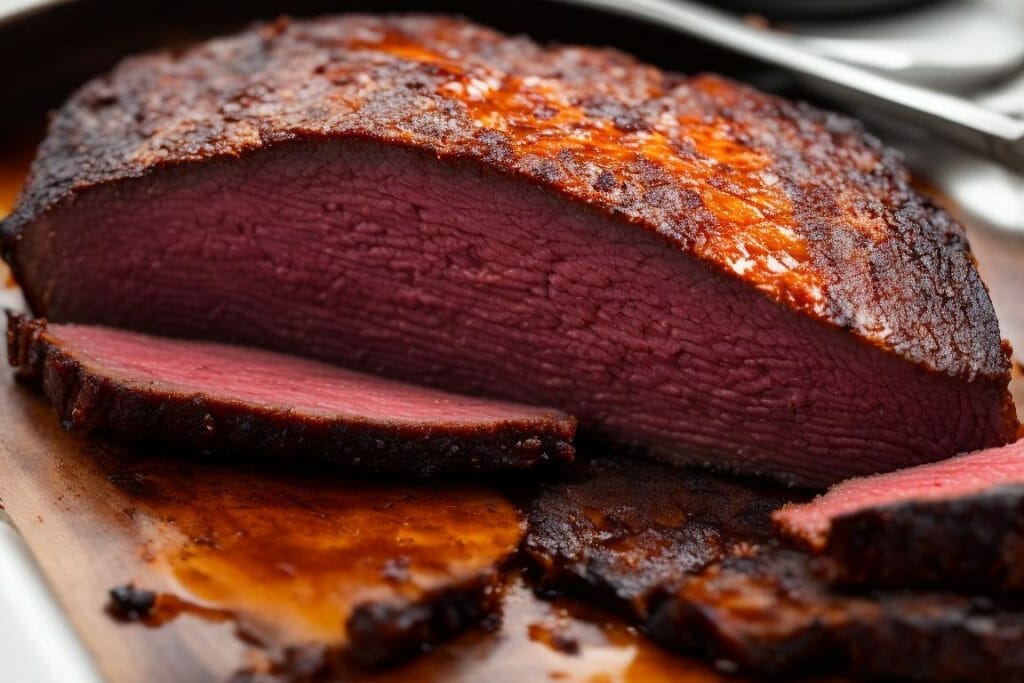
A brisket is a cut of meat that comes from the chest of a cow, specifically the breast section. It’s a flavorful and tender cut that’s popular for barbecuing and smoking.
The key to a great brisket lies in understanding the importance of resting it properly after cooking.
Why Resting Brisket is Important
You should let the brisket rest for at least 30 minutes to ensure the juices redistribute and the meat continues to cook internally. Resting the brisket is a crucial step in achieving a flavorful and tender end result. Here’s why:
Internal Temperature of Brisket
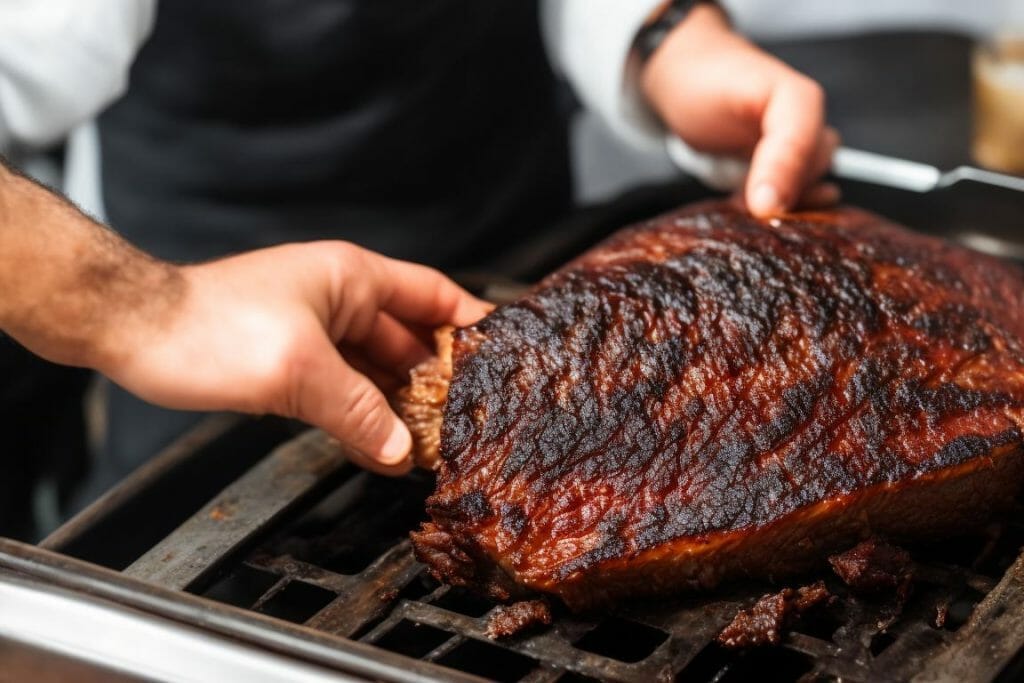
To ensure that your brisket is cooked to perfect brisket, it’s important to monitor its internal temperature.
The internal temperature of brisket should reach around 195°F to 205°F for optimal tenderness.
This temperature range allows the collagen in the meat to break down, resulting in a tender and brisket juicy.
The Optimal Temperature for Resting a Brisket
When resting your brisket, make sure to remove it from the heat at around 190°F and allow it to reach an internal temperature of 203°F for optimal results. This resting period is crucial for the meat to become tender and juicy, as it allows the muscle fibers to relax and reabsorb their juices.
Here are a few things to keep in mind during the resting process:
Measuring Internal Temperature
During the cooking process, be sure to insert the internal meat thermometer into the thickest part of the brisket to accurately measure its internal temperature. This step is crucial in determining when the brisket is ready for the resting period.
The internal temperature of the brisket should reach around 195°F to 205°F for optimal tenderness and flavor. Keep in mind that the cooking times may vary depending on the size of the brisket, so it’s important to rely on the meat thermometer for accuracy.
Once the brisket reaches the desired temperature, remove it from the heat source and let it rest for at least 30 minutes. This resting period allows the juices to redistribute throughout the meat, resulting in a more moist and flavorful brisket.
Recommended Internal Temperatures for Resting a Brisket
After reaching an internal temperature of 203°F, let your brisket rest for at least 30 minutes to allow the juices to redistribute and enhance its flavor. This period of time is crucial in ensuring that your brisket achieves maximum tenderness. The resting process allows the meat to relax and the juices to evenly distribute throughout the brisket, resulting in a moist and flavorful final product.
Here are four reasons why resting your brisket at the recommended internal temperature is an essential step:
Brisket in Foil vs. Butcher Paper
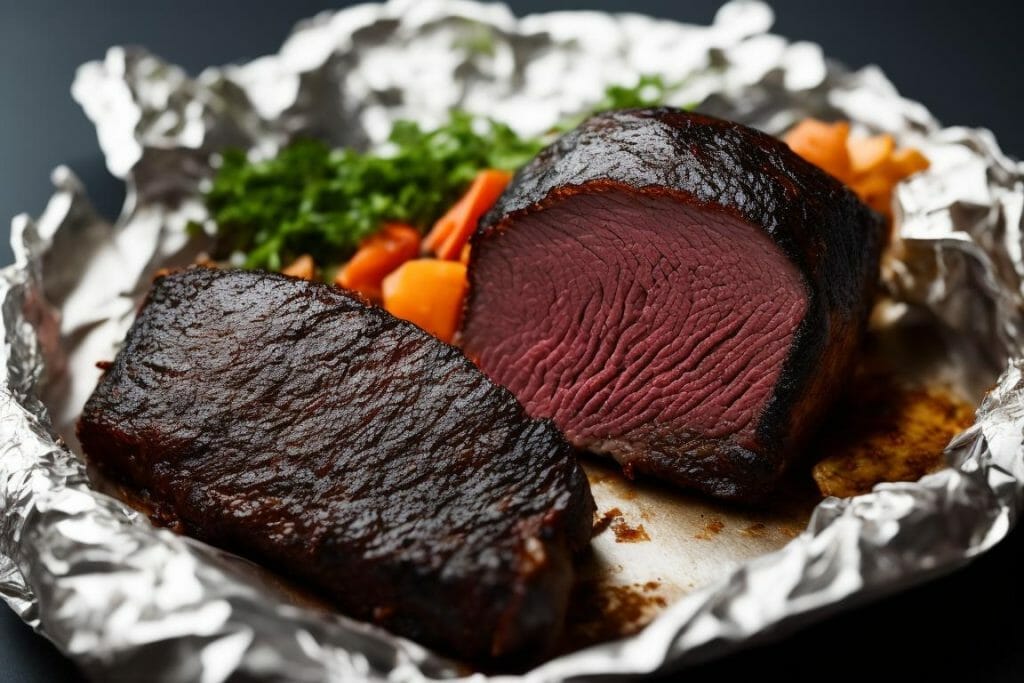
When it comes to resting your brisket, the choice between using foil or butcher paper can make a big difference.
Wrapping the brisket in foil helps trap heat and juices, creating a moist and tender end result.
On the other hand, using butcher paper allows for airflow while retaining moisture, resulting in a slightly drier bark but still maintaining juiciness.
Ultimately, the decision between foil and butcher paper comes down to personal preference and the desired outcome for your brisket.
Wrapping the Brisket in Foil to Trap Heat and Juices
You should always tightly wrap the brisket in foil to trap heat and juices, ensuring it stays moist and flavorful. Here’s why:
Using Butcher Paper to Keep the Moisture in a while Allowing Airflow
To keep the moisture in while still allowing airflow, wrap the brisket in butcher paper for at least an hour, allowing excess moisture to be absorbed and steam to escape.
Butcher paper, unlike foil, provides breathability, which helps preserve the crispy bark on the brisket. The paper acts as a barrier that retains the moisture within the meat, preventing it from drying out, while still allowing air to circulate. This balance is crucial for achieving a tender and juicy brisket.
When resting the brisket on butcher paper, it’s important to give it enough time for the paper to absorb any excess moisture, which helps maintain the ideal texture. Additionally, the paper retains heat, ensuring that the brisket stays warm during its resting period.
The recommended time for brisket to rest on butcher paper is at least an hour, allowing the flavors to meld and the meat to become even more tender.
Pre-Cooked vs. Uncooked Brisket

When deciding between pre-cooked and uncooked brisket, it’s important to consider the resting time required for each.
Pre-cooked briskets need less time to rest since they’ve already gone through the cooking process.
On the other hand, uncooked briskets require more time for resting to ensure tenderness and juiciness.
Pre-Cooked Briskets Need Less Resting Time
Pre-cooked briskets require a shorter resting time for the juices to redistribute. This is because the meat has already been cooked and only needs to rest to allow the flavors to meld and the juices to evenly distribute throughout the brisket.
Here are four reasons why pre-cooked briskets need less resting time:
Uncooked Briskets Require More Time for Resting
If you’re cooking an uncooked brisket, you’ll need to allow for more time to rest before slicing it. This is because uncooked briskets require more time for resting in order to achieve optimal tenderness.
During the cooking process, the proteins in the meat tighten up, resulting in a tough texture. Allowing the brisket to rest after cooking gives these proteins a chance to relax and redistribute their juices, resulting in a more tender and flavorful final product.
The recommended resting time for uncooked briskets is at least 3 hours, although longer resting times, preferably overnight, can yield even better results. It’s important to note that the size of the brisket and personal preferences can also affect the length of the resting time.
Meat Rest Processes and Times
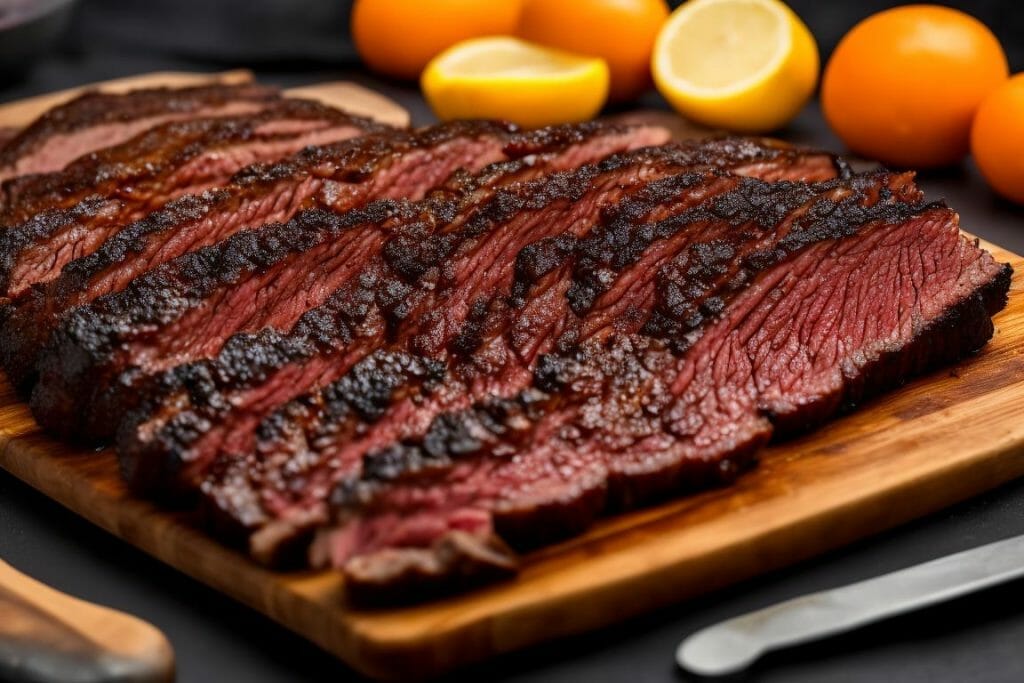
When it comes to resting meat, the process and time can vary depending on the type and size of the cut. Resting allows the meat to relax and the juices to redistribute, resulting in a more tender and flavorful end product.
For smaller cuts like steaks, a rest of 5-10 minutes is usually sufficient, while larger roasts may require 15-20 minutes or more.
It’s important to note that these times are just guidelines, and it’s always best to use a meat thermometer to ensure the meat has reached the desired internal temperature before resting.
Factors Affecting the Length of Meat Rests
You should consider various factors, such as the presence of natural juices and connective tissues when determining how long to let your meat rest. The length of meat rests for briskets can be affected by several factors, which can ultimately impact the quality of the final dish.
Here are four factors that can affect the length of meat rests:
Natural Juices, Hot Water, Connective Tissues, and Cooking Methods
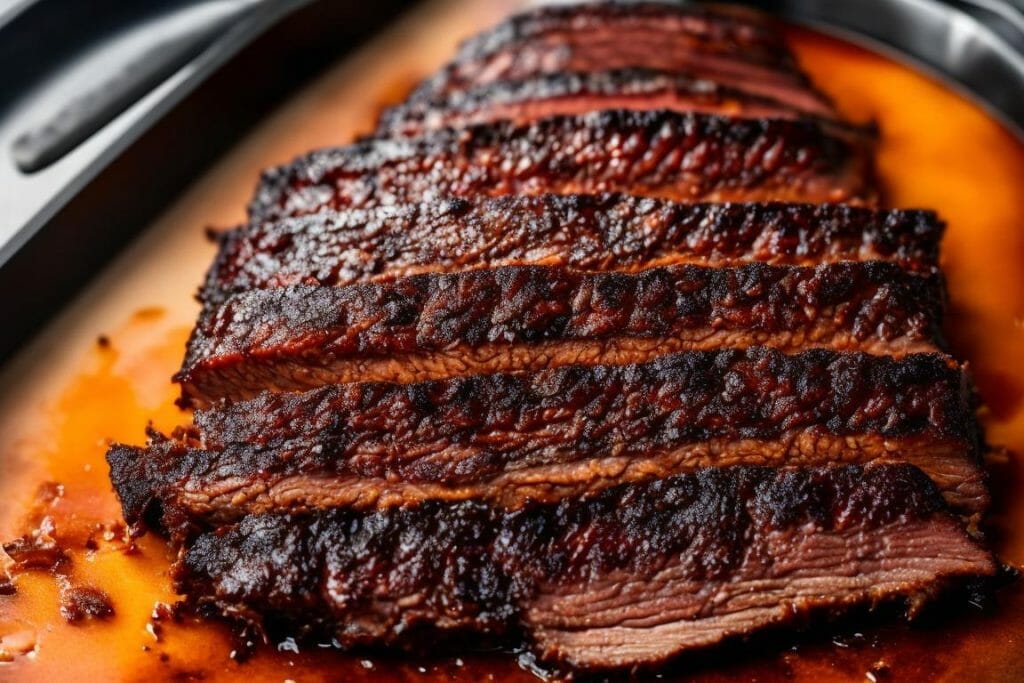
Make sure to use a sufficient amount of natural juices, hot water, connective tissues, and cooking methods to enhance the tenderness and flavor of your brisket.
When it comes to resting your brisket, these factors play a crucial role. Natural juices, rich in flavor, are distributed throughout the meat during the resting period, ensuring each bite is juicy and delicious.
To maintain the temperature, hot water can be used in an insulated container, keeping the brisket moist and preventing it from drying out.
Connective tissues, like collagen, break down during cooking, resulting in a tender and melt-in-your-mouth texture.
Different cooking methods, such as smoking or slow roasting, can affect the resting time and overall outcome of the brisket.
Frequently Asked Questions
Can I Cook a Brisket Without Wrapping It in Foil or Butcher Paper?
You can definitely cook a brisket without wrapping it in foil or butcher paper. However, keep in mind that wrapping helps retain moisture and creates a more tender and flavorful end result.
How Long Should I Let a Pre-Cooked Brisket Rest Before Serving?
You should let a pre-cooked brisket rest before serving to allow the juices to redistribute and the meat to become more tender. Rest it for about 15-30 minutes, covered loosely with foil, before slicing and serving.
What Are Natural Juices and Why Are They Important in Brisket?
Natural juices are the flavorful liquids that are present in meat, including brisket. They are important because they contribute to the overall taste and juiciness of the meat, making it more delicious and enjoyable to eat.
Should I Trim the Connective Tissues of the Brisket Before Cooking?
You should trim the connective tissues off the brisket before cooking. This will help the meat to cook more evenly and result in a tender and flavorful brisket.
Are There Any Alternative Cooking Methods for Brisket Besides Smoking?
When it comes to cooking brisket, smoking is the traditional method. However, there are alternative cooking methods such as oven roasting or slow cooking in a crockpot that can yield delicious results.
Conclusion
In conclusion, allowing brisket to rest after cooking is crucial to ensure a juicy and tender end result. The rest time will vary depending on factors such as the internal temperature of the meat, the cooking method used, and whether the brisket is pre-cooked or uncooked.
Whether you choose to use foil or butcher paper to wrap the brisket during the rest period is a matter of personal preference. Regardless, giving the brisket ample time to rest will allow the natural juices to redistribute, resulting in a more flavorful and satisfying meal.

